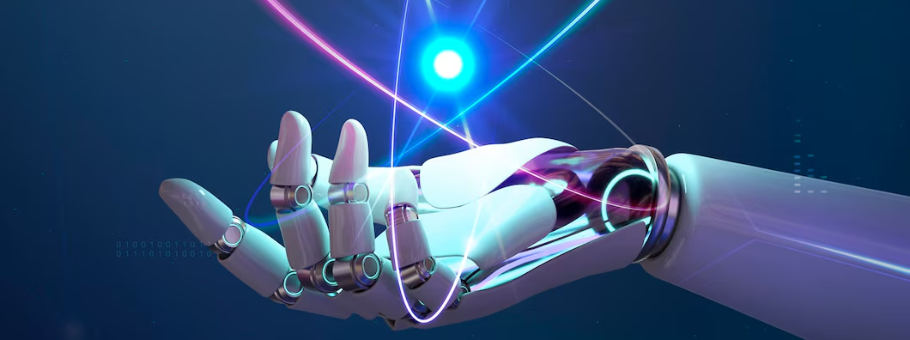How AI Impacts Academic Publishing

Academic publishing plays a crucial role in sharing new research and advancing scientific knowledge across disciplines. The traditional academic publishing process relies heavily on manual work by human editors, reviewers, and administrators. However, artificial intelligence (AI) is beginning to take on a bigger role, leading to noteworthy changes in how academic literature is processed and disseminated.
A Brief History of Academic Publishing
For over 350 years, academic publishing has followed a standard workflow. Scientists and scholars submit their research manuscripts to journals in their field. Editorial staff check the paper for formatting and plagiarism, assign it to expert peer reviewers, and coordinate any needed revisions between the authors and reviewers. Once accepted, the publisher formats the paper, adds metadata, assigns a DOI (digital object identifier), and publishes it in an issue of the journal. Print copies are distributed, and the paper becomes searchable in academic databases.
This complex, manual process has evolved with technology. Online submission systems have streamlined initial steps, coordination is done by email, and papers are published digitally in online archives before print. However, the system remains labor-intensive, and publishing still takes months to sometimes over a year. AI has the potential to transform many of these steps to the point that it also changed the way we view the design community.
How AI is Changing Peer Review
One of the biggest impacts of AI is on the pivotal peer review stage. AI cannot replace human judgment in evaluating the merit and novelty of research. However, AI tools can assist in key parts of the review process:
1. Automating Initial Checks for Plagiarism and Formatting
AI programs can quickly check papers for issues like text duplication, references, image manipulation, and proper formatting. This relieves editors of mundane tasks so they can focus on higher judgment.
2. Assisting in Technical Screening and Assignment to Reviewers
AI-enabled systems can conduct an initial technical screening of papers through natural language processing. They can identify key terms and topics in the paper to find the best potential reviewers. This improves matches between papers and reviewer expertise.
3. Analyzing Papers to Identify Key Topics and Assess Quality
Calculations can remove semantic experiences from papers to feature key terms, results, and ends. This helps editors in understanding the center concentration and commitment. Artificial intelligence projects can likewise survey specialized quality and companion audit trouble to illuminate choices.
4. Potential to Reduce Bias and Improve Fairness
Since man-made intelligence frameworks apply predictable principles, they can possibly diminish human inclinations in light of institutional distinction, position, orientation, or different variables. In any case, care should be taken to guarantee man-made intelligence doesn’t repeat predispositions in the preparation information.
AI’s Impact on Journal Operations
Past companion survey, computer based intelligence can further develop productivity in taking care of papers and speaking with creators:
1. Streamlining Submission and Formatting Checks
Mechanized frameworks fueled by computer based intelligence can in a flash confirm key necessities in a paper accommodation, diminishing dependence on manual quality checks. This speeds up introductory processes.
2. Automating Communication with Authors
Man-made intelligence chatbots and savvy email projects can assume control over routine errands like affirming receipt, mentioning amendments, addressing status questions, and comparison of distribution charges. This saves time for human staff.
3. Providing Insights through Bibliometric Analysis
Algorithms can analyze citation patterns and usage metrics to inform decisions on journal priorities, scope expansion, special issues, and article promotions. This data enhances strategic planning.
4. Enabling Faster Publishing Workflows
Automating menial tasks at each stage—submission, review, revision, acceptance, formatting, and production—can significantly speed up publication while maintaining quality. This increases output and accessibility.
Generating Content with AI
Perhaps the most controversial application of AI is in using machine learning algorithms to actually generate content like academic papers.
1. Automated Writing of Basic Descriptions and Summaries
Current AI has some capability to automatically write abstracts, graphical/table captions, and metadata descriptions by extracting key findings from papers.
2. Limitations and Risks of Fully AI-Written Papers
While AI can produce human-readable text, it lacks true comprehension of scientific principles and cannot make the logical connections needed to develop novel insights. Fully machine-generated papers would lack scientific merit.
3. Ethical Concerns Around Creative Contribution
Passing off AI-generated or heavily AI-supported work as original human scholarship raises serious ethical questions around misrepresenting creative contribution and intellectual property.
4. The Future of AI as a Co-Author or Contributor
As AI writing improves, it may appropriately receive co-author credits for supplementary papers summarizing findings across disciplines. However, AI should not replace human scholars as primary authors of novel research.
Challenges for Adoption of AI
Despite the promise of AI-enabled tools, adoption in academic publishing faces obstacles:
1. Perceptions about Credibility and Bias
If AI participation is not disclosed, readers may doubt the credibility of peer review and editing. Hence, transparency is key.
2. Lack of Transparency in Some AI Systems
Black-box algorithms whose workings cannot be explained or audited may not be trusted for critical quality checks.
3. Concerns About Proper Attribution and Acknowledgement
Researchers want assurance that their work is evaluated fairly by AI tools and that use of their data to develop AI is acknowledged.
4. Publishing Industry Inertia and Hesitation to Change
The slow-moving publishing industry has institutional inertia. Editors and publishers may resist departures from entrenched workflows.
The Future of AI in Academic Publishing
Looking ahead, AI will enable pivotal changes in scholarly communication:
1. AI Assisting Rather Than Replacing Humans
AI’s greatest value is in enhancing human capabilities, not replacing editorial and peer review. The human role will continue.
2. Increased Efficiency and Productivity
Automating routine tasks will boost journal capacity to publish quality papers faster, increasing dissemination of new knowledge.
3. More Openness and Accessibility
Faster publishing, plus AI-aided translation and summarization, will make more research available to global audiences.
4. Continued Evolution of Peer Review and Quality Control
As AI’s capabilities grow, the entire publishing system—not just peer review—can be reimagined and improved.
Conclusion
The introduction of AI technology is poised to bring disruptive changes to academic publishing. Though adoption has been gradual so far, AI-based tools have the potential to automate routine tasks, offer key insights through analysis, reduce human biases, and enable faster and more open dissemination of knowledge. However, care must be taken to maintain transparency, ensure proper attribution, and keep human quality control at each stage. If deployed thoughtfully, AI could usher in a new era of enhanced productivity, accessibility, and integrity in sharing scientific discoveries. Academic publishing has always evolved with technology, and the responsible use of AI presents promising new horizons.
FAQs
1. How will AI change peer review?
AI can automate initial quality checks, assign reviewers, analyze papers, and potentially reduce bias, but human judgement is still essential in peer review.
2. Can AI programs generate academic papers independently?
No. While AI can produce text, it lacks true scientific knowledge and reasoning ability needed to develop novel scholarship.
3. Will AI replace editors and publishers entirely?
Unlikely. AI’s biggest impact will be in assisting humans and enhancing efficiency, rather than wholesale replacement of roles.
4. Does AI introduce risks like flawed judgement or bias?
Potentially, if the algorithms replicate biases in training data. Transparency, auditability and human oversight are crucial.
5. Will adoption of AI in publishing be fast or gradual?
Gradual, due to institutional inertia and wariness around credibility. But AI will become more ubiquitous over time.









